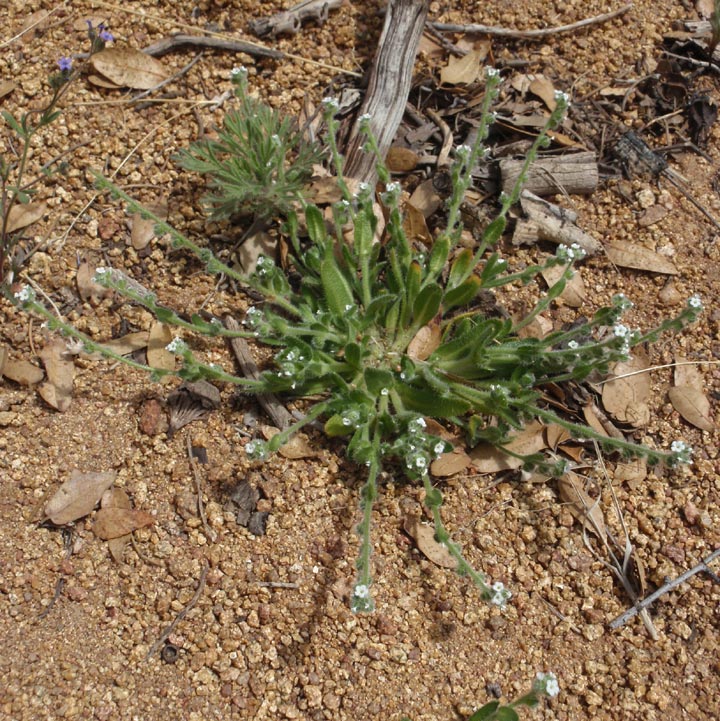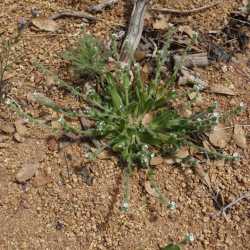Duration: Annual
Nativity: Native
Lifeform: Forb/Herb
General: Annual from slender taproot, several stems prostrate to ascending, generally 10-40 cm, hairs appressed to spreading, fine or coarse.
Leaves: Cauline, lower generally opposite, 1-4 cm, upper alternate, often very leafy.
Flowers: Generally spikelike inflorescence, bracts throughout, but terminal part often naked, often bearing axillary flowers almost to base; calyx lobes lance-linear, to about 3 mm, corolla 1-7 mm wide, white.
Fruits: Nutlet 1-2 mm, ovoid, midrib, lateral ribs, cross-ribs sharp, scar at tip of oblique stalk.
Ecology: Found in dry sites, in a variety of habitats from 2,000-6,500 ft (610-1981 m); flowers March-May.
Notes: There are a number of different intergrading varieties regionally. Var. fulvescens is a likely candidate for the most widespread in the Sonoran Desert. It can be found among the chaparral and up into the coniferous forests. It is distinguished by its slightly wider corolla, about 2 mm, its generally coarse hairs, and oblanceolate leaves that are 1-3 cm long and 3-4 mm wide.
Ethnobotany: Unknown, but other species in the genera have uses.
Etymology: Plagiobothrys is derived from Greek plagios, oblique or placed sideways, and bothros, a pit or scar, while collinus is named for means pertaining to hills.
Synonyms: None, numerous varieties can be checked against Tropicos
Editor: SBuckley, 2010




